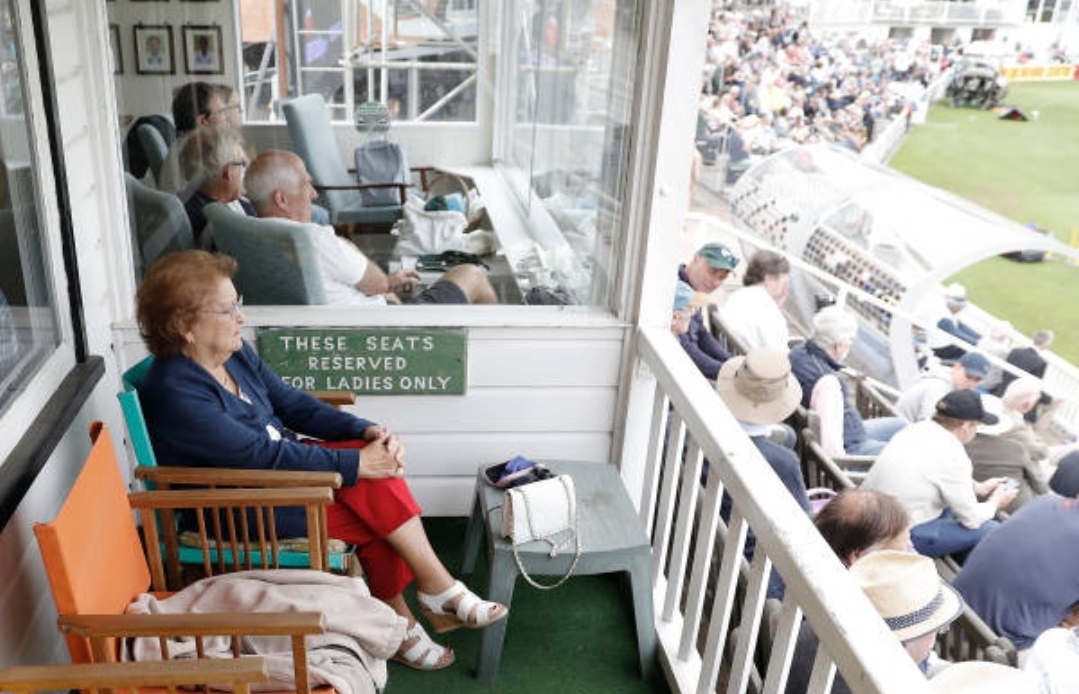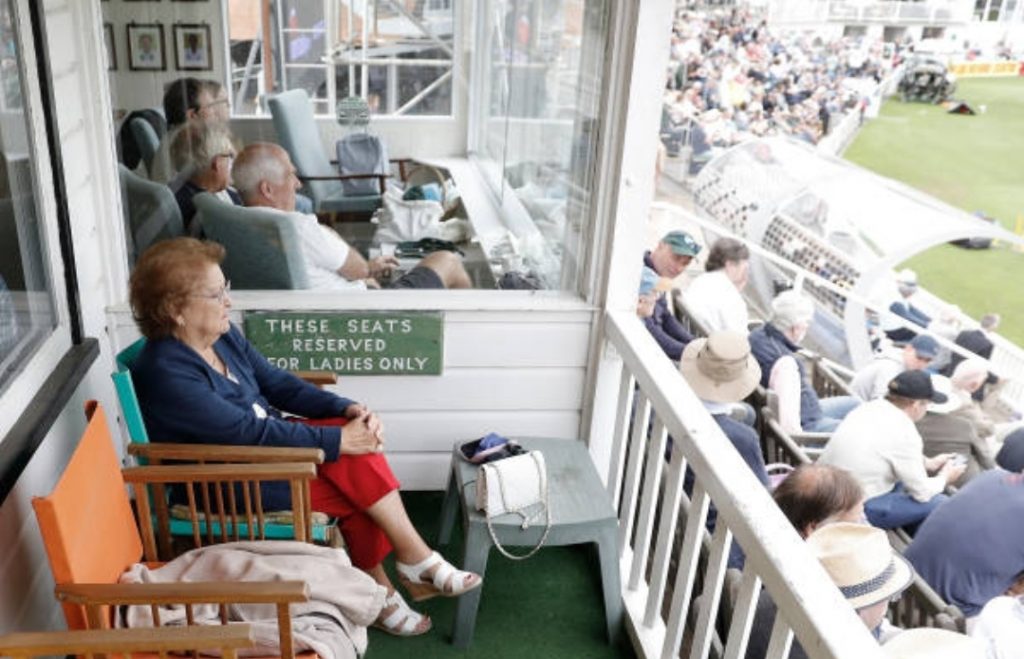Abbie Rhodes discusses the sexist and anachronistic attitudes still so prevalent at every level of English cricket and what this means for female cricket fans.

The Hundred is a controversial subject. Not one we should have to contemplate for another nine months or so, thanks to its pandemic postponement to 2021, but controversial nonetheless. It was the brainchild of former Costcutter CEO and outgoing England and Wales Cricket Board (“ECB”) chairman Colin Graves – who, during commentary of England’s recent third test against Pakistan, noted that “women and children” haven’t really been watching the sport.
Cue his solution: the fourth potential format consisting of 100-ball innings, 10-ball overs, and no lbw rule. A franchise perfect for “mums and kids“, so former Director of Cricket Andrew Strauss described, no less because the (allegedly) clarified rules are “as simple as possible for them to understand”.
This makes perfect sense because, as all the Edwardian physicians in the room will know, an adult woman’s cognitive brain function is much similar to that of a child’s than to that of, say, an adult man. If your name isn’t Sigmund Freud, however, then you’ll probably be able to discern that women are not discouraged from watching any of the existing three formats of cricket because they are too complex, too dull, or too long (at least, not any more than anyone else) – they are discouraged as a direct result of the obtrusive sexism endemic in its culture.
Endemic because such attitudes as espoused by Strauss aren’t the exception; they are representative of the ECB’s general problem of largely failing to understand anyone beyond their very limited circle, and that certainly isn’t limited to just women. The Hundred consists of seven mismatched teams with no connection to their local area that fans are expected to feel sufficient affinity towards to follow (though passion is neither here nor there, arguably, as long as the money flows) – a hollow and patronising parody of contemporary football leagues, which is reflective of a careless misunderstanding of working-class people’s relationship with sport. It is painfully clear that at no point during the conception of the franchise were any of the people this format is supposed to target directly involved.
The main opposition to the Hundred is often portrayed as being myopic conservative types, those who want to see the game’s historic and often extremely archaic traditions preserved by any means necessary. But the truth is that bourgeois conservatism – that which maintains the interests of the elite in upholding the existing social order – and neoliberal commercialisation are two sides of the same coin. Not only does a dead-eyed franchise line the pockets of sponsors and investors, it fences off the rabble so that the ‘real’ cricket can continue to be enjoyed by the ‘real’ cricket fans: men who went to fee-paying schools, entertained by men who didn’t but are willing to denounce their class to act as though they did. Hence is maintained the culture of exclusion, only now without anyone banging on the door to the big boys’ club. Finally, some peace and quiet.
If only they knew that a whole new franchise was surplus to requirement in alienating female fans while pretending to cater to them. The issue of misogyny in a sport that barred women from Lord’s Pavilion until 1998 (when 30% of the membership still voted against the motion to allow them in) doesn’t begin or end with the Hundred. Commentators routinely refer to female fans as having been “dragged along by their [husbands]”, and the low regard in which they hold women’s intellects – and just about everything else about women – are not unknown to the public before such observations are made.
Current and former pundits share amongst them a less-than favourable track record: Shane Warne for sending harassing text messages to women and hiring a nineteen-year-old prostitute (Warne, by comparison, is fifty); Ian Botham for allegedly harassing and assaulting multiple underage girls at the height of his fame in the 1980s; and Geoffrey Boycott for beating his then-girlfriend, leaving her with serious injuries about which he famously “couldn’t give a toss”. Outside of the commentary box, former England spinner Monty Panesar was kicked out of a nightclub for harassing women, his ex-wife holding a restraining order against him, and Tom Kohler-Cadmore was welcomed back into the 55-man group of players to begin training ahead of the COVID-19 summer after being involved in a WhatsApp group that shared explicit messages detailing sexual violence against women that lead to the rape conviction of Australian Worcestershire player Alex Hepburn.
Families of captains that consist of a stay-at-home mother and an entourage of children are considered “exactly the sort of family” required of a successful skipper – so much so, it appears, that just about every other England player since has emulated that model. If these men exist in a world wherein the only women that they ever encounter are their Instagram-mum housewives, no wonder they seem entirely unable to envision women beyond the domestic sphere.
Undoubtedly, the reality does exist that plenty of women do have young children and, particularly working-class women, will have to organise their leisure time around caring for them. The issue, however, is the perceived need to dumb down the content of the game to appeal to the unified “women and children” instead of addressing the cultural and material barriers that exist to these people in accessing existing forms of the game; as well as the assumption that ‘women’ and ‘mothers’ are a synonymous demographic.
When women aren’t nurturing caregivers, of course, they can be nothing other than sexual objects. After watching sections of the South Africa test coverage earlier this year be interspersed with leering shots of female spectators in the crowd deemed attractive by the cameramen (in one instance cut with Jonny Bairstow watching the action from the balcony through binoculars to make it appear, in jest, that he was watching the women instead), suddenly the simple action of commentator Nasser Hussain making the effort to mention young “boys and girls” aspiring to play cricket seemed, by comparison, like a revolutionary feminist gesture.
Watching that coverage unfold, though it was hardly cause for outcry, made me all of a sudden acutely aware of my sex, and ultimately of the fact that – on some level – this was not coverage meant for my eyes, but for the eyes of men. Women are consistently passive and reluctant fans, if fans at all, and if they are not there to mother a child or humour a husband, then they must be there to provide visual gratification for all the male fans watching at home. A stretch to call it a Madonna-whore complex, perhaps, but such terms can’t not spring to mind.
The truth is that women don’t attend cricket matches as an accessory to their male associates; they go because they want to watch cricket. Women watch cricket. Women understand and enjoy cricket. Those women might be mothers, they might be wives, they might be neither. They might be students, or workers, or athletes. But crucially they are none of those things in any more or less capacity than men who watch cricket are fathers, or husbands, or just people who want to enjoy a sport that they love without being patronised for it.
The fact that such basic notions of gender equality need to be asserted is testament to the often anachronistic environment cricket has created for itself, in this country and beyond. If England Cricket insist on continuing in their reference to the fictitious collective demographic of “women and children”, especially without addressing the misogyny rampant amongst their ranks, we can only hope it is because they recognise that the ship on which they sail is rapidly sinking.
Abbie Rhodes




